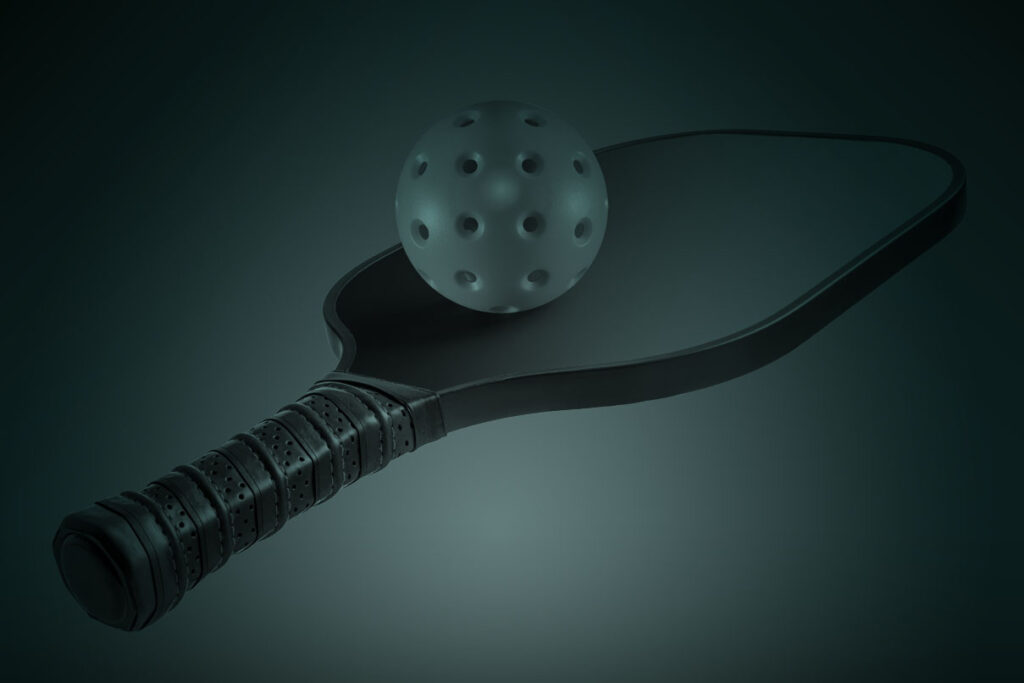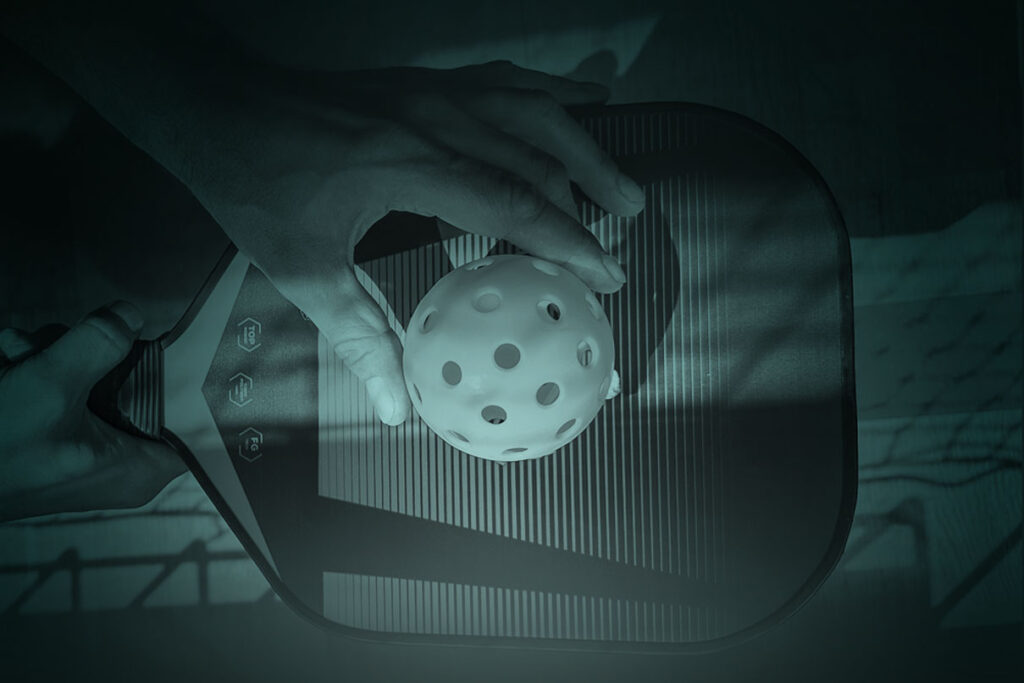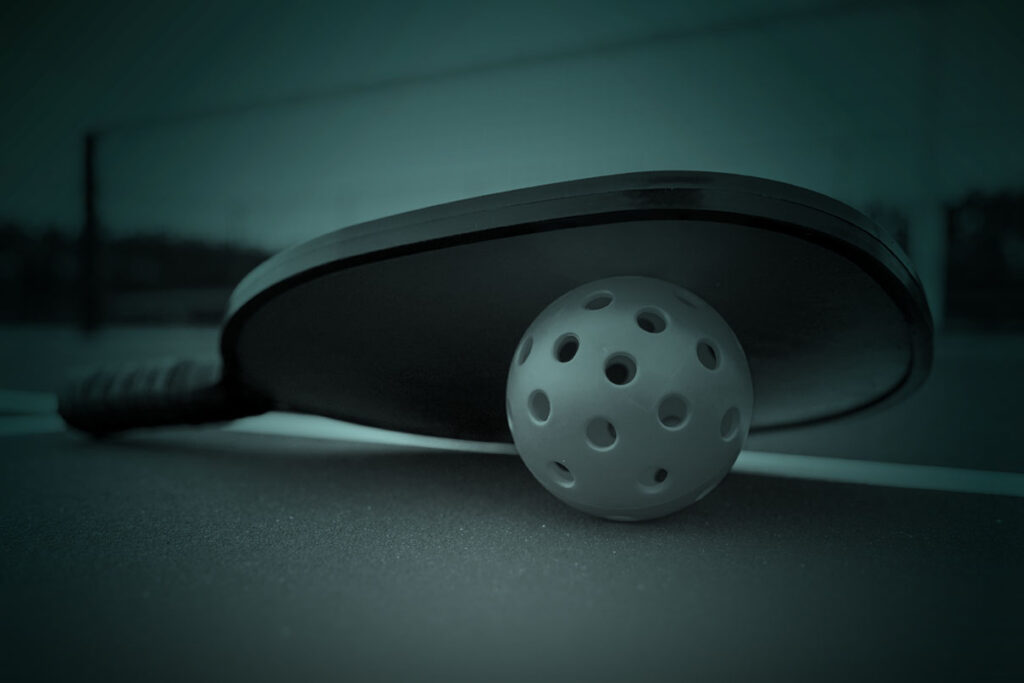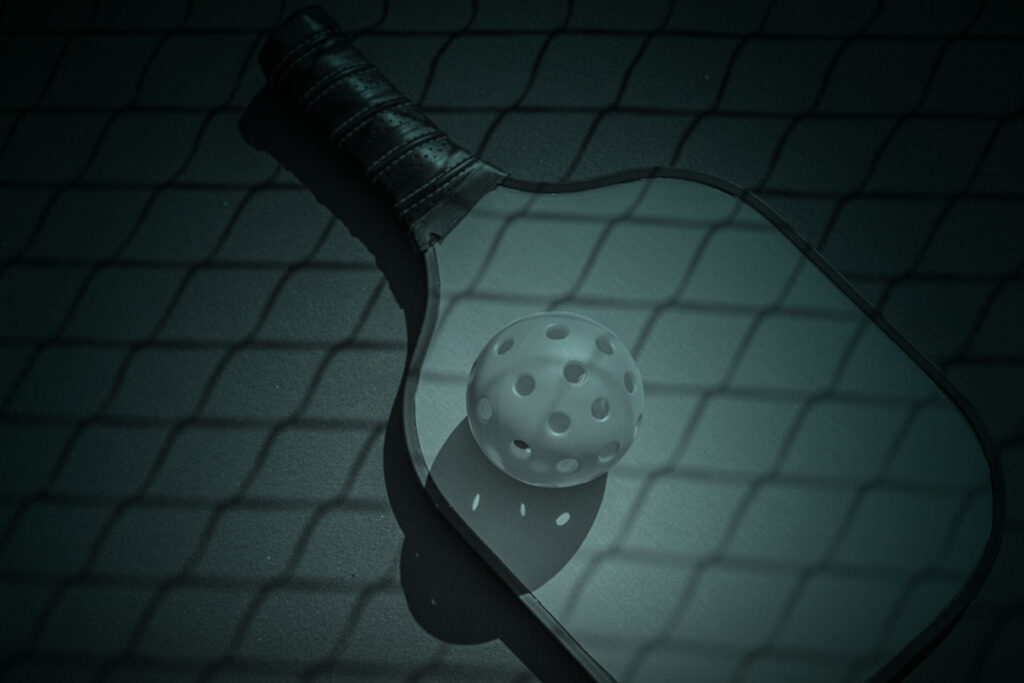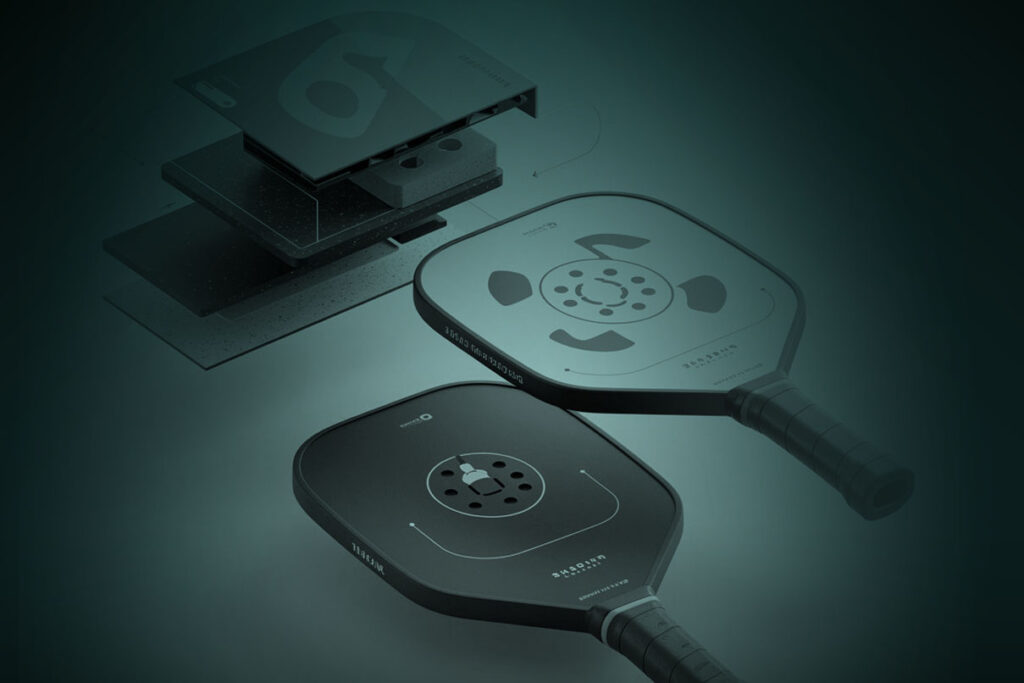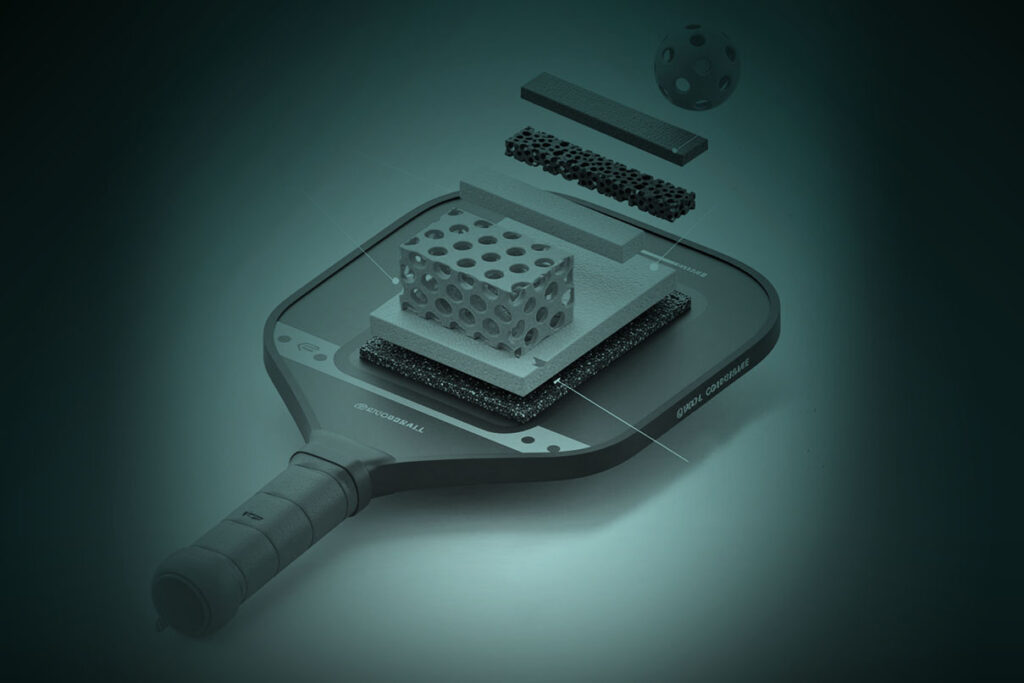PURPOSE
The spin rate of a hit ball is one of the key metrics affecting the game of pickleball. As a ball’s spin rate increases, it becomes easier for players to control and shape shots. Accordingly, quantifying a ball’s spin rate that can be generated through a ball/paddle impact is critical in ensuring the competitive balance of pickleball is maintained. This procedure establishes a repeatable and controlled ball/paddle impact scenario that allows for a paddle’s ability to impart spin on a ball to be quantified.
Preparation
- Qualify balls for use in Spin Rate Testing (refer to PPL Ball Qualification Procedure)
- Condition Paddle and Balls
a. Paddles and balls must be stored in a conditioned environment for a minimum of 4 hours prior to any testing or measurements are taken.
i. Temperature requirement: 72𝑜 ± 2𝑜 𝐹
ii. Relative humidity requirement: 50% ± 10% - Mark Balls with Motion Tracking Markings
a. Use the PPL Marking Template Tool and a black fine point Sharpie to apply motion tracking markings to the ball (refer to Figure 1)
b. Motion tracking markings should be added to each of the four quadrants of the ball; the motion tracking markings should be located at the center of each quadrant with one of the cross components colinear and parallel to the ball’s parting line - Determine paddle face that will be impacted a. Default face to be impacted will be the face with the lowest ADF b. PPL reserves the right to impact either or both faces of the paddle
Procedure
- Set Up ADC Performance Cannon System
a. Turn on the system according to manufacturer’s manual - Clamp the paddle in the performance cannon apparatus so that the pivot point of the paddle clamp is 2.0” from the butt end of the paddle
a. Engage the pivot lock on the pivot clamp – this will ensure the paddle remains in a fixed position and does not rotate during impact
b. Orient paddle such that the appropriate face will be impacted
c. Orient paddle such that the incoming ball impacts the paddle face with a 30 degree incident angle (refer to figure 2)
i. Use a digital angle gauge to ensure paddle face is within +/- 0.5 degree of the target incident angle - Load and properly orient ball into the cannon. Appropriate orientation will ensure the targeted ball quadrant will impact the target paddle location and the motion tracking markings will be in the high-speed camera’s field of view immediately before, during and after the pending impact.
a. Balls are divided into four quadrants, Q1-Q4. After each impact the appropriate quadrant is marked so that total impacts can be tracked.
b. All balls for Spin Rate testing will have undergone a minimum of eight impacts during the Ball Qualification Procedure and all balls shall be retired after experiencing a total of 48 impacts (12 impacts per quadrant).
c. To identify the appropriate impact quadrant, review the impact tracking marks. If all quadrants have been impacted an equal number of times, the next quadrant to be impacted shall be Q1. If all quadrants have not been impacted an equal number of times, the next quadrant to be impacted shall be the lowest number quadrant with the fewest number of impacts. - Pressurize the air cannon to a pressure that will produce the desired inbound ball velocity
a. Inbound velocity target is 40 mph +/- 1 mph - Input the relevant paddle, ball and test data into the ADC Performance Cannon Software Application

- Align the paddle in the X and direction so that the zero position is at the tip end of the paddle on the centerline (see Figure 3) using a laser alignment tool to identify the cannon target location. a. It is common practice in the sport to refer to the impact location as the distance from the end of the paddle. For example, when hitting on the 6” location, this means a location that is 6” from the tip end of the paddle.

- Adjust the paddle location such that the ball impact location will be at the location of lowest ADF, along the centerline of the paddle a. Use laser to verify paddle alignment
- Prepare High-Speed Camera
a. Position camera on the side of the sensor chamber such that the camera’s field of view includes an unobstructed line of sight to the impact location and surrounding area (refer to Figures 4 and 5)
b. Frame recording rate should be set to a minimum of 4600 FPS. - Shoot the cannon at the desired velocity and location on the paddle
- Record impact and rebound with high-speed camera
- Verify impact validity
a. The inbound velocity must be ± 1.0 𝑚𝑝ℎ of desired velocity
b. The paddle must not twist in the clamp during contact – verify orientation remains within the tolerance with the digital angle gauge
c. The ball’s motion tracking mark must be visible and stay within the camera’s field of view before, during and after the impact - Calculate and Record Spin Rate a. Use Phantom Camera Control (PCC) motion tracking software to calculate spin rate by analyzing video footage using the Angle and Angular Speed: Four Point Method
i. Spin rate is determined from the analysis of a set of 50 consecutive video frames where frame one is defined as first post-impact frame after the ball and paddle lose contact
ii. Calculate spin rate from frames 10-50 and 30-50; the average of these values shall be the reported Spin Rate for this particular impact - Utilizing a different ball for each impact, repeat steps 9 – 12 to obtain 6 valid spin rate readings.
- The average of the 6 valid spin rate readings shall be the reported spin rate value for a particular impact location



